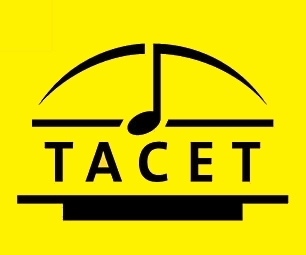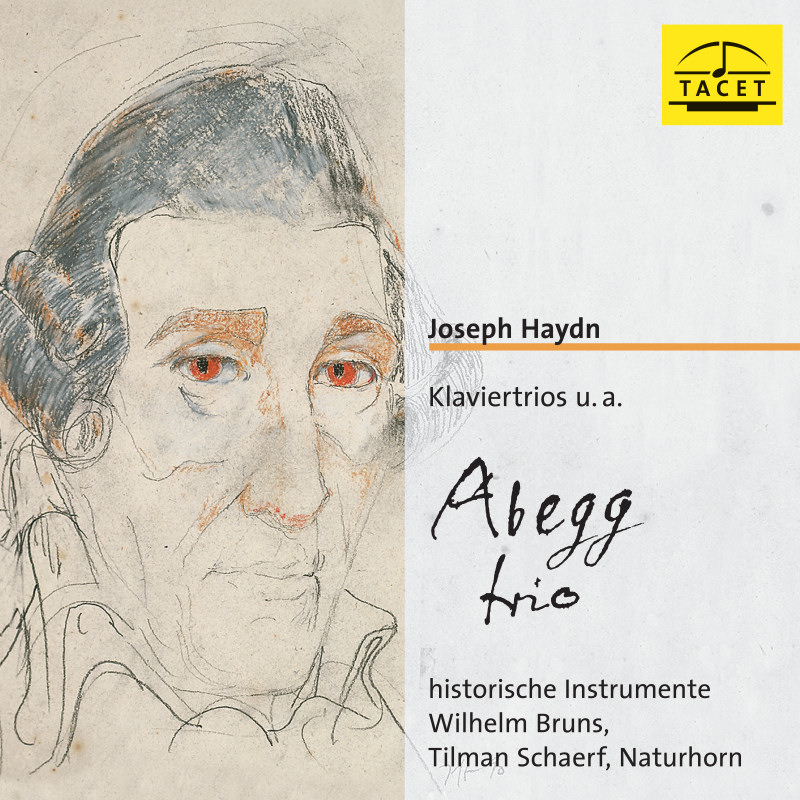0195-0 CD
Joseph Haydn
Klaviertrios u.a.
Abegg Trio mit historischen Instrumenten
Wilhelm Bruns, Tilman Schaerf, Naturhorn
EAN/barcode: 4009850019503
The trademark of the Abegg Trio was always and still is creating music programmes and recordings with intelligence, in a guaranteed authentic manner. Their latest programme also bears witness to this: Joseph Haydn, played on historical instruments with catgut strings and old bows matching the time during which the works were composed, recorded in the Festival Hall of the Weimar City Palace (built between 1789 and 1803). The two natural horn players Wilhelm Bruns and Tilman Schaerf enrich the original programme with a Quintet for two horns and piano trio as well as a virtuoso Trio for natural horn, violin and violoncello.
Tracks
| Nr. No. N° |
Werk - Satz Composition - movement Oeuvre - mouvement |
Komponist Composer Compositeur |
Künstler Artist Interprète |
Dauer Duration Durée |
|
| 1 | Trio für Klavier, Violine und Violoncello A-Dur Ho. XV:18 | Allegro moderato | Joseph Haydn (1732 - 1809) | Abegg Trio | 10:18 |
| 2 | Andante | Joseph Haydn (1732 - 1809) | Abegg Trio | 3:59 | |
| 3 | Allegro | Joseph Haydn (1732 - 1809) | Abegg Trio | 3:49 | |
| 4 | Quintett für Cemablo, 2 Hörner, Violine und Violoncello Es-Dur Hob. XIV:1 | Moderato | Joseph Haydn (1732 - 1809) | Abegg Trio Wilhelm Bruns Tilman Schaerf | 5:54 |
| 5 | Menuet - Trio | Joseph Haydn (1732 - 1809) | Abegg Trio Wilhelm Bruns Tilman Schaerf | 3:04 | |
| 6 | Finale. Allegro | Joseph Haydn (1732 - 1809) | Abegg Trio Wilhelm Bruns Tilman Schaerf | 3:13 | |
| 7 | Trio für Klavier, Violine und Violoncello d-Moll Hob. XV:23 | Molto Andante | Joseph Haydn (1732 - 1809) | Abegg Trio | 8:40 |
| 8 | Adagio ma non troppo | Joseph Haydn (1732 - 1809) | Abegg Trio | 5:03 | |
| 9 | Finale. Vivace | Joseph Haydn (1732 - 1809) | Abegg Trio | 4:52 | |
| 10 | Divertimento à tre für Horn, Violine und Violoncello Es-Dur Hob. IV:5 | Moderato assai | Joseph Haydn (1732 - 1809) | Abegg Trio Wilhelm Bruns | 2:30 |
| 11 | Finale. Allegro di molto | Joseph Haydn (1732 - 1809) | Abegg Trio Wilhelm Bruns | 2:03 | |
| 12 | Trio für Klavier, Violine und Violoncello E-Dur Hob. XV:28 | Allegro moderato | Joseph Haydn (1732 - 1809) | Abegg Trio | 7:25 |
| 13 | Allegretto | Joseph Haydn (1732 - 1809) | Abegg Trio | 3:28 | |
| 14 | Finale. Allegro | Joseph Haydn (1732 - 1809) | Abegg Trio | 5:10 | |
total playing time: 70:16
See reviews for this production
![]() Audiophile Audition (04/02/2012):
Audiophile Audition (04/02/2012):
Think you know anything about Haydn’s Piano Trios? Try this on for size.
Much of Haydn’s chamber music, aside from the string quartets, gets unfairly ignored; indeed, when comparing the piano trios of the Esterhazy master to those of Mozart it is commonplace to assume that the Salzburg boy had a one-up in all departments. more...
![]() Ensemble (12/01/2011):
Ensemble (12/01/2011):
![]() hifi & records (12/01/2011):
hifi & records (12/01/2011):
![]() Fono Forum (11/01/2011):
Fono Forum (11/01/2011):
Homogen zu fünft - "Fono Forum Tipp"
Da kann niemand kommen und sagen, dieses Haydn-Programm sei Nullachtfünfzehn. Neben drei Klaviertrios im klassischen Sinne enthält die neue CD des Abegg-Trios auch ein Quintett für Cembalo, 2 Hörner, Geige und Cello sowie das Es-Dur-Divertimento für Horn und zwei Streicher. more...
![]() Klassik heute (09/26/2011):
Klassik heute (09/26/2011):
(...)Drei dieser späten Trios haben die Musiker des 1976 gegründeten und seit 35 Jahren in gleicher Besetzung spielenden Abegg Trios nun im Weißen Saal des Weimarer Schlosses für das Label TACET eingespielt. more...
![]() klassik.com (09/14/2011):
klassik.com (09/14/2011):
--> Original-Artikel. more...


